Zorilla: Meet The Coolest Safari Creature From Africa

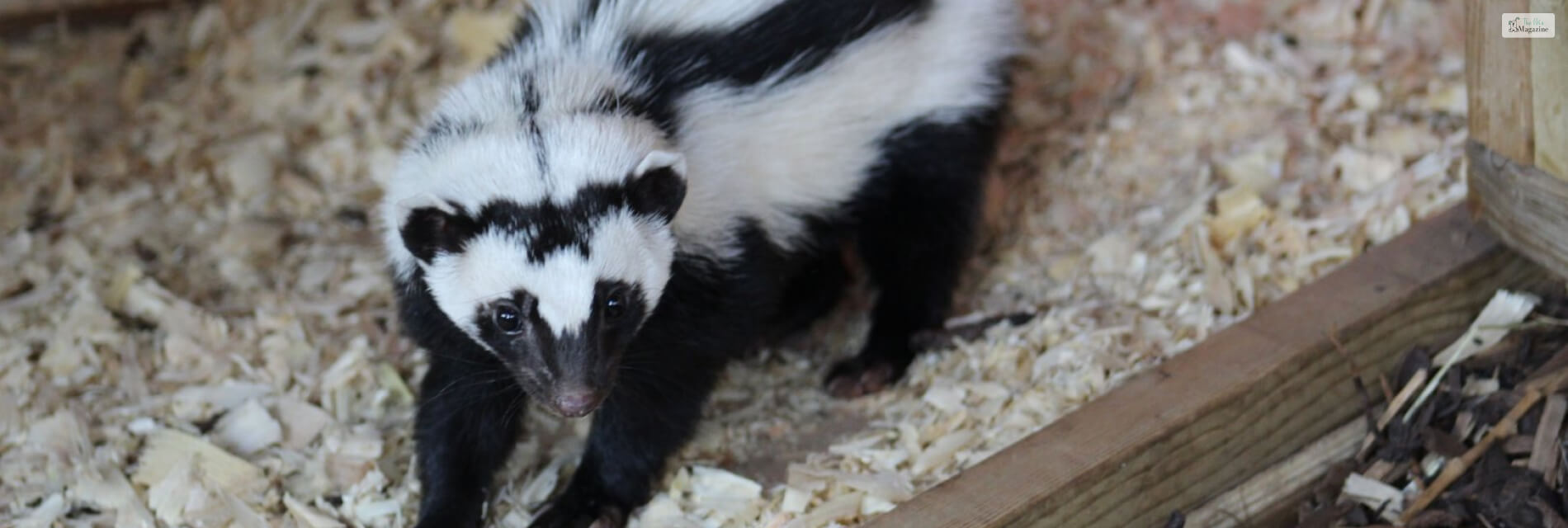
In the latest installment of the Ice Age movie, you might have might remember Zee, Buck’s love interest. And we learned that she is a Zorilla.
But wait, What is a Zorilla?
That is exactly what I am going to discuss here in this article. That how rare of an aminal is a Zorilla. Spotting one in the wild is a once in a lifetime chance if you are that lucky.
Let’s say you spot one, but how are you going to going to distinguish one from a common skunk?
Keep on reading to know the answer to all these questions.
Overview
| Kingdom | Animalia |
| Phylum | Chordata |
| Subphylum | Vertebrata |
| Class | Mammalia |
| Order | Carnivora |
| Suborder | Carniformia |
| Family | Mustelidae |
| Genus | Ictonyx |
| Species | Ictonyx Striatus |
| Population Size | Unknown |
| Life Span | 13-14 years |
| Weight | 0.6-1.3 kg |
| Length | 60-70 cm |
What Is A Zorilla?
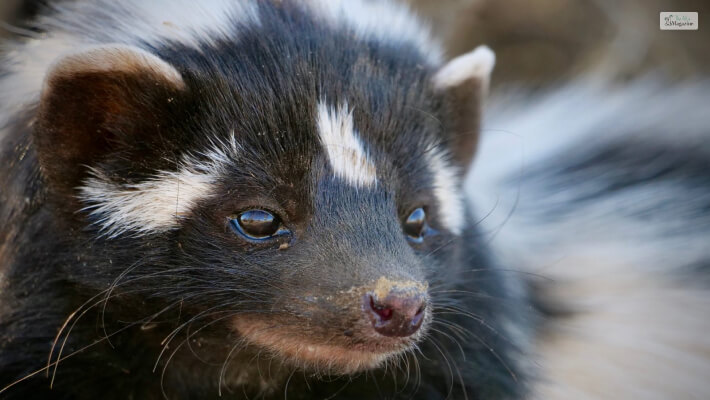
Zorilla is the common name for the Striped Polecat; it is many other names likely, including Zorille, African Polecat, Zoril, Cape Polecat, and also African Skunk. It belongs to the mustelids family and consists of other animals like a badger, weasel, and also otter.
Like the skunk, every member of the mustelids family has the unique ability to produce a scent to repel other animals from coming near. These Zorillas are carnivorous animals that are adapted to live in the dry climatic conditions of Africa.
These animals have a variety of colorations depending on the area they are living in. But on a general basis, they are black on the upside and have a whitetail. They have stripes from the head running down to their back and cheeks.
Their feet and legs are black in color, with white spots on the head with white ears. Their face mask is also very unique. These masks have a purpose of serving, and that is to warn of potential predators.
Distribution: Where Are They Found?
These Zorillas are found all over the continent of Africa, from Southern to sub-Saharan Africa and in Central. From the rocky areas to the grasslands and the deserts, these Zorillas are adaptable in every region.
Geographic Distribution
| Continents | Africa | |||
| Subcontinents | North-Africa | Sub-Saharan Africa | Chad | Egypt |
| Countries | Nigeria | Tanzania | Ghana | Kenya |
| Biogeographical Realms | Palearctic | Afrotropical | ||
| Biome | Desert | Moist Rainforests | Forest | Swamp |
| Climate Zones | Tropical | Temperate |
Habits And Lifestyle
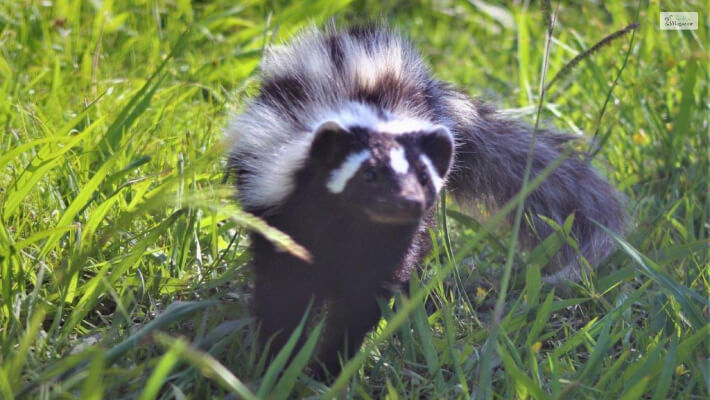
Striped Polecats or Zorilla animal are very active and terrestrial. These are typically solitary or isolated animals, as they like to roam around alone. And the only animals that they associate with are other animals of the same species for the purpose of breeding.
Being nocturnal animals, they are very active during the night and sleep throughout the day inside burrows. Like other animals, they mark their territory with feces and peeing the area.
| Group Name | Chine | |||
| Lifestyle | Terrestrial | Predator | Territorial | Burrowing |
| Seasonal Behavior | Non-migrant | |||
Diet And Nutrition
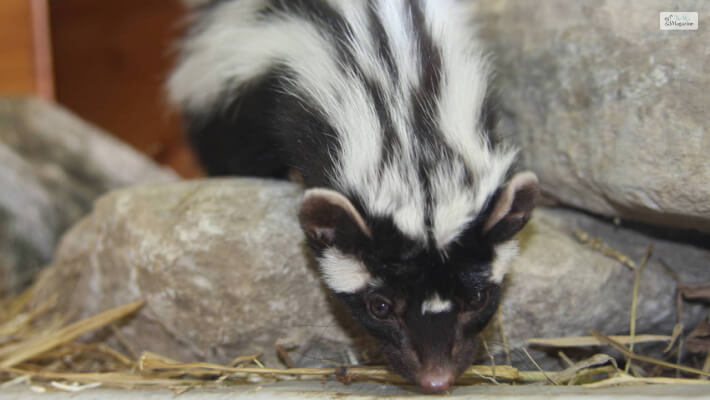
As I have mentioned before, Zorillas are carnivores animal; hence they feed upon all kinds of small animals and insects. Like snakes, rodents, birds, and insects.
In many local villages and towns of Africa, these Zorillas are a nuisance, as they steal chickens from the houses of the villagers.
Mating Habit
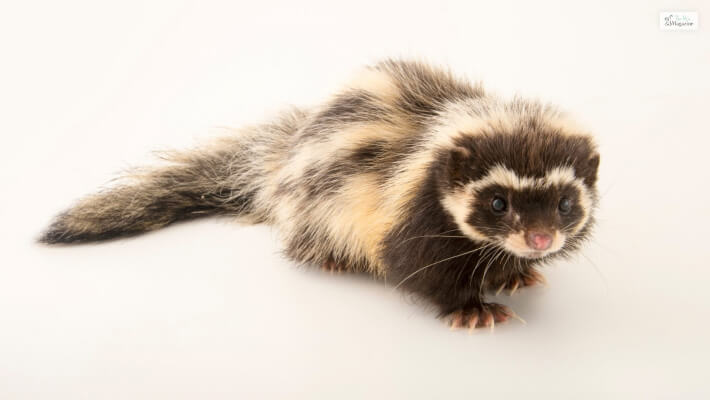
The breeding time for Zorillas is from spring to late summer. The babies are born blind, naked, and deaf. Hence the females are usually the ones who prepare a nest during the mating time.
The Zorillas are 20 to 30 weeks old; they reach their reproductive maturity. The baby Zorillas are called Kits, and they are protected by the mother until they are old enough to protect themselves.
| Independent Age | 18 weeks |
| Reproduction Season | Spring to Late-summer |
| Pregnancy time | 4 weeks |
| Number of Babies | 1-5 kits |
| Male Name | Hob |
| Female Name | Jill |
| Baby Name | Kit |
Communication
Zorillas communicate with each other in a variety of signs and vocal calls. When they are in attack mode or giving a warning, they tend to growl. They have a significant high-pitched shrill scream to indicate aggression with anal spray.
They have a mating call during the mating season. The younger ones have a specific call set that signifies distress, joy, or the presence or absence of the mother.
Defense Mechanism
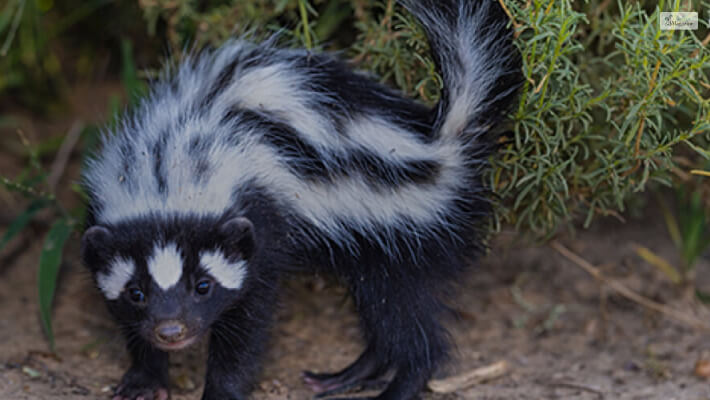
Zorillas or striped Polecats have a very aggressive stance when they are in defense mode. By nature, they are very territorial and aggressive. They spray their territory with a particular anal spray that is released from their anal stink glands.
This spray blinds the opponent temporarily and results in a burning sensation with irritation. Before they spray this anal spray on their opponents, the Zorillas stand in a deimatic-like stance with an arched back. With their backside facing the opponent and their tail raised straight up.
Fun Facts About Zorillas
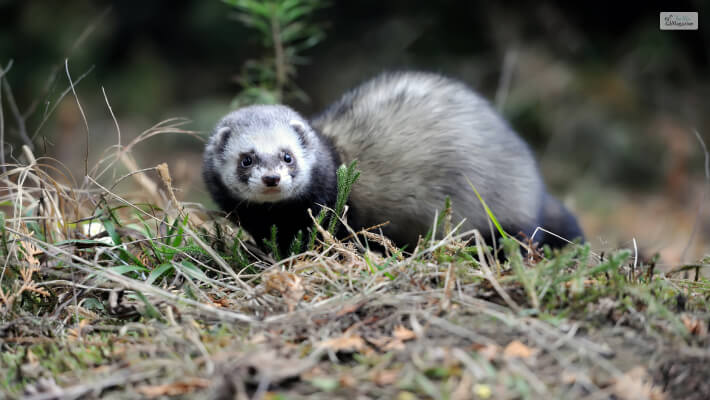
Here are a few fun facts about Zorillas.
- They are nocturnal animals. To avoid conflict with other animals, they take shifts in hunting for food.
- The males and females walk differently. Male zorillas held their tail high up while females hung theirs down below while walking.
- They are very similar to skunks. Zorillas are very closely related to skunks, but they belong from different families. The skunk belongs to the Mephitidae family, while the Zorilla belongs to the Mustelid family.
- Their butts smell like burnt hair. When you accidentally burn a little bit of your hair, it gives out a weird smell of sulfur. That is exactly what zorillas behind smells like.
Can Zorillas Be Kept As Pets? Things to Consider
Keeping a zorilla as a pet is not a good idea for several reasons. Here are some of the things to consider before deciding to adopt a zorilla:
- Zorillas are wild animals that are not domesticated or bred for captivity. They have natural instincts and behaviors that may not be compatible with living in a human household. They may be aggressive, territorial, destructive, or unpredictable.
- Zorillas are very rare and endangered animals that are native to Africa. They are not legally available for sale or trade in most countries, and importing them may require special permits and regulations. They may also carry diseases or parasites that are harmful to humans or other animals.
- Zorillas are carnivorous animals that require a specific diet of meat, insects, and other small animals. They may not accept commercial pet food or human food, and they may hunt or attack other pets or wildlife. They also need a lot of space and enrichment to exercise and explore.
- Zorillas are notorious for their powerful defense mechanism: a potent spray of foul-smelling liquid that they use to deter predators. They can spray up to 10 feet (3 meters) and the smell can linger for days or weeks. The spray can also cause irritation, nausea, or blindness if it gets in the eyes or mouth.
As you can see, zorillas are not suitable pets for most people. They are better off living in their natural habitat, where they can fulfill their ecological role and contribute to biodiversity.
Ecological Role & Conservation Status of Zorillas
These cute small animals are key contributors the the ecological system. However, their species is also threated due to several reasons. Here’s a few things you must know about the Zorilla and their role in the ecosystem –
Predator
Zorillas or striped polecats have a critical role in their ecosystems as carnivorous predators. Their primary food includes insects, birds, small mammals, amphibians, etc. Zorillas help regulate their population by preying on these animals contributing to the ecological balance of their habitats. This ability to prey not only keeps the insect’s level at a minimum rate but helps the ecosystem. It also allows them to support agricultural health and biodiversity.
Also a Prey
Aside from being a predator, the Zorillas are also the prey to larger carnivores like jackals and birds of prey. This dual role underscores the importance of them in the food chain. So, it’s safe to say that they also contribute to the dynamic system of the food chain. So, it’s important to note that they maintain a balanced population of various species, making sure of a healthy environment.
Unique Defence Mechanism
Zorillas are strong with their defense mechanism. As an animal, they have the in-built biological trait that helps them to defend themselves through difficulties. They can spray a foul-smelling liquid from their anal glands. This adaption is very similar to skunks and is effective against predators that might be after the Zorillas. So, it’s clear that Zorillas are unique and have an important role to play in the ecosystem of their environment.
Conservation Status of Zorillas
- A population under threat: It’s difficult to conserve the Zorillas despite their ecological status. They are losing their habitats thanks to urbanization and agricultural expansion across different parts of the world. Also, they are under the threat of trappers and hunters who often hunt Zorillas.
- Current Conservation Status: However, the International Union for Conservation of Nature has labeled the Zorillas under a “Least concern” tag. However, localized populations may be experiencing declines because of loss of habitat. To conserve them and keep their population intact, it’s important to keep note of these facts.
- Conservation Efforts: For the protection of the Zorillas, it’s important to focus on their habitats and work to preserve them. In many cases, human-animal conflict is the reason why some species get abolished. Creating conservation awareness among the locals can remove such conflicts and help conserve them.
Frequently Asked Questions (FAQs)!
Now that you know what is a Zorilla, you shouldn’t have any more questions, but just in case, here are what others asked.
Ans: No, despite their similar features and defense mechanism, a Zorilla and Skunk are not the same. Although Skunks spray a stinky spray when they feel threatened, Zorillas are even smellier. They even belong to different animal families.
Ans: You might wonder if a Skunk is the smelliest animal in the world, but No, it is a Zorilla, which is the smelliest animal in the world.
Ans: Zorillas are carnivorous; hence they are predators of animals. Their diet consists of birds, insects, and snakes.
Wrapping Up!
Zorillas are very private and isolated animals and trends to keep away from any conflict. They share a close resemblance with skunks in both appearance and defense mechanism but belong to different families.
These Zorillas are quite ancient animals as they appear in early cave paintings. But still, their population is quite stable compared to other ancient animals.
Read Also:





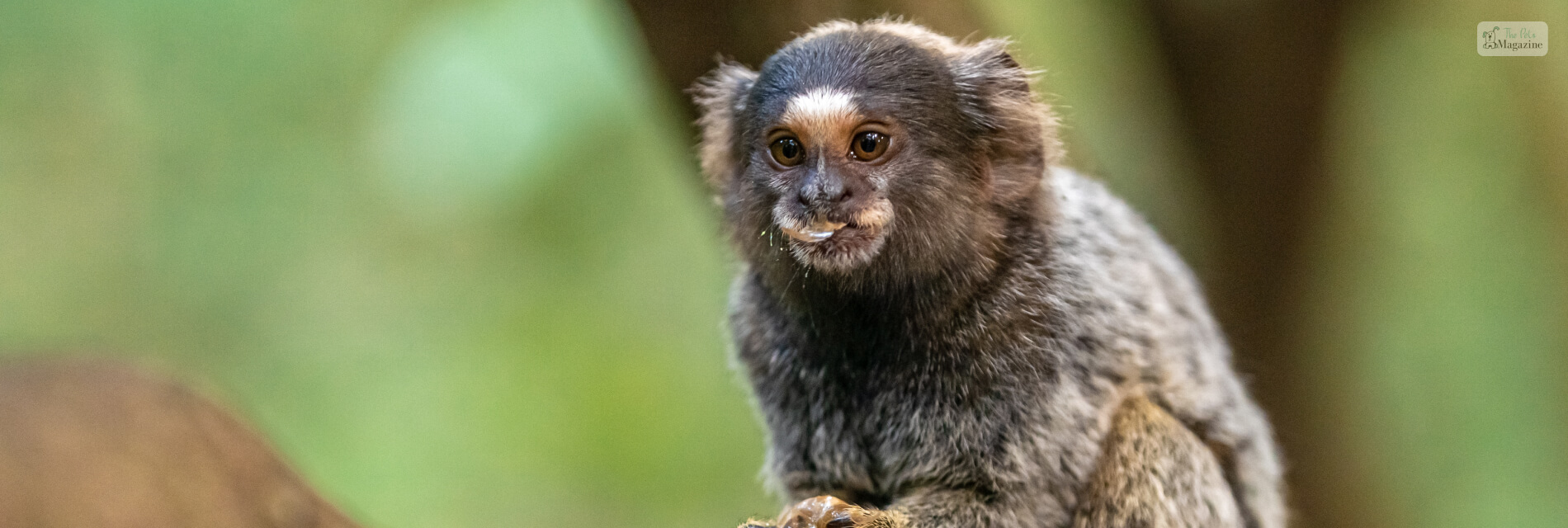

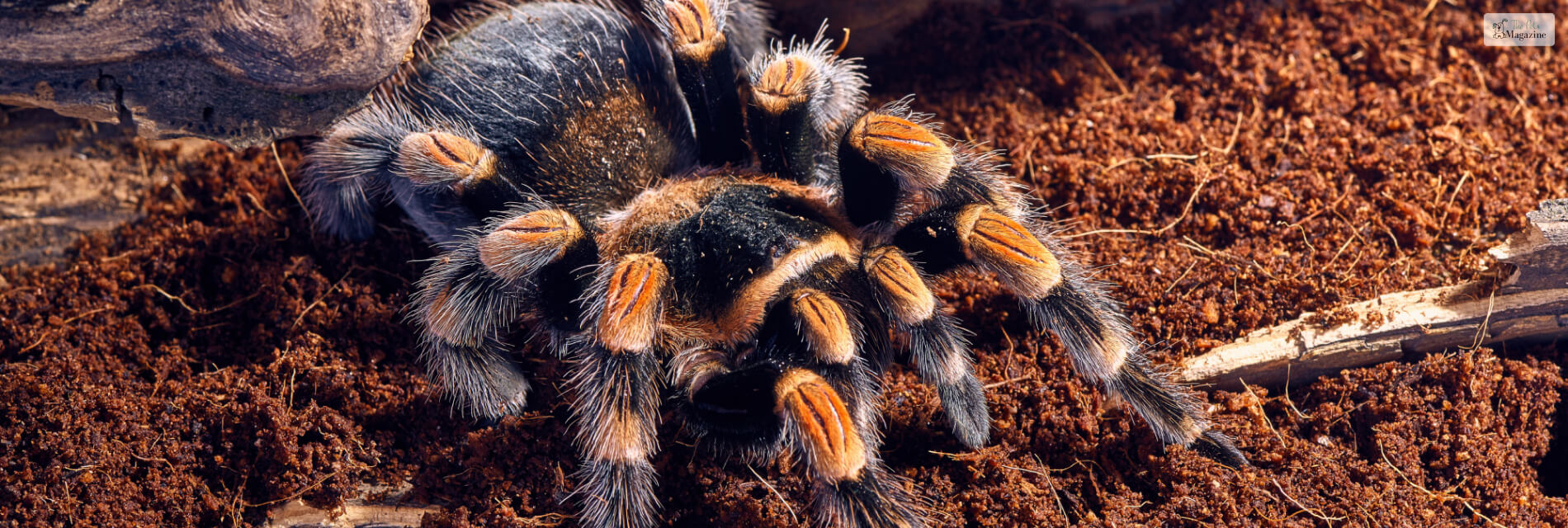
Leave A Comment